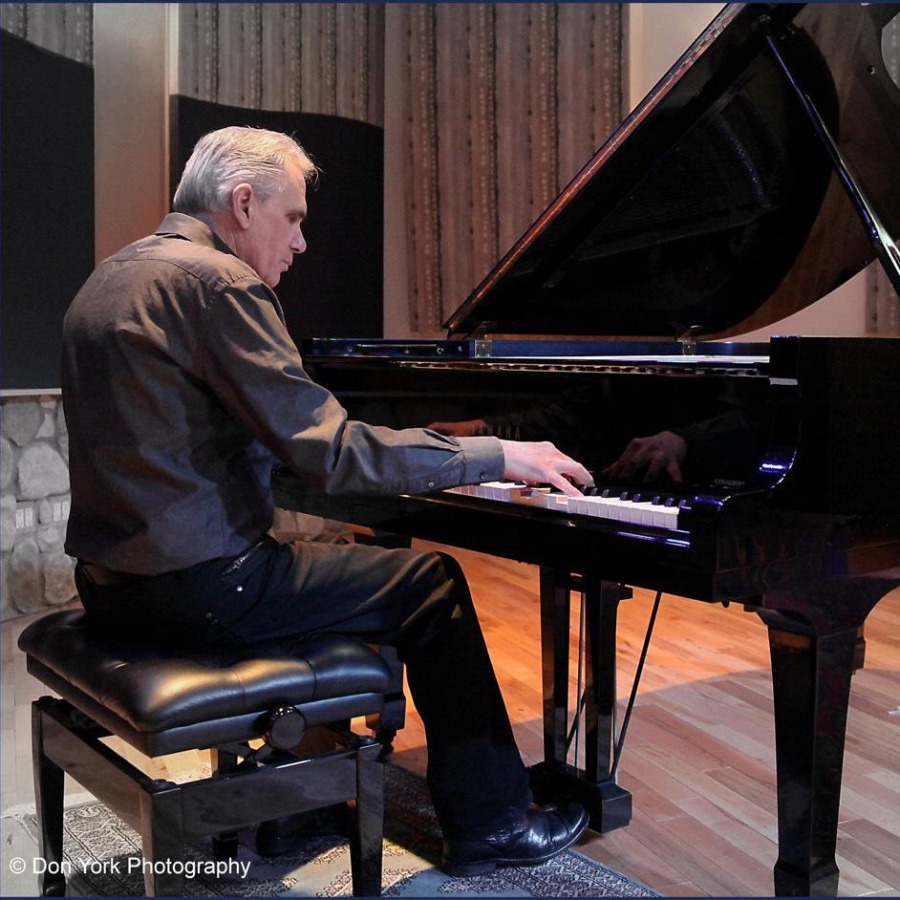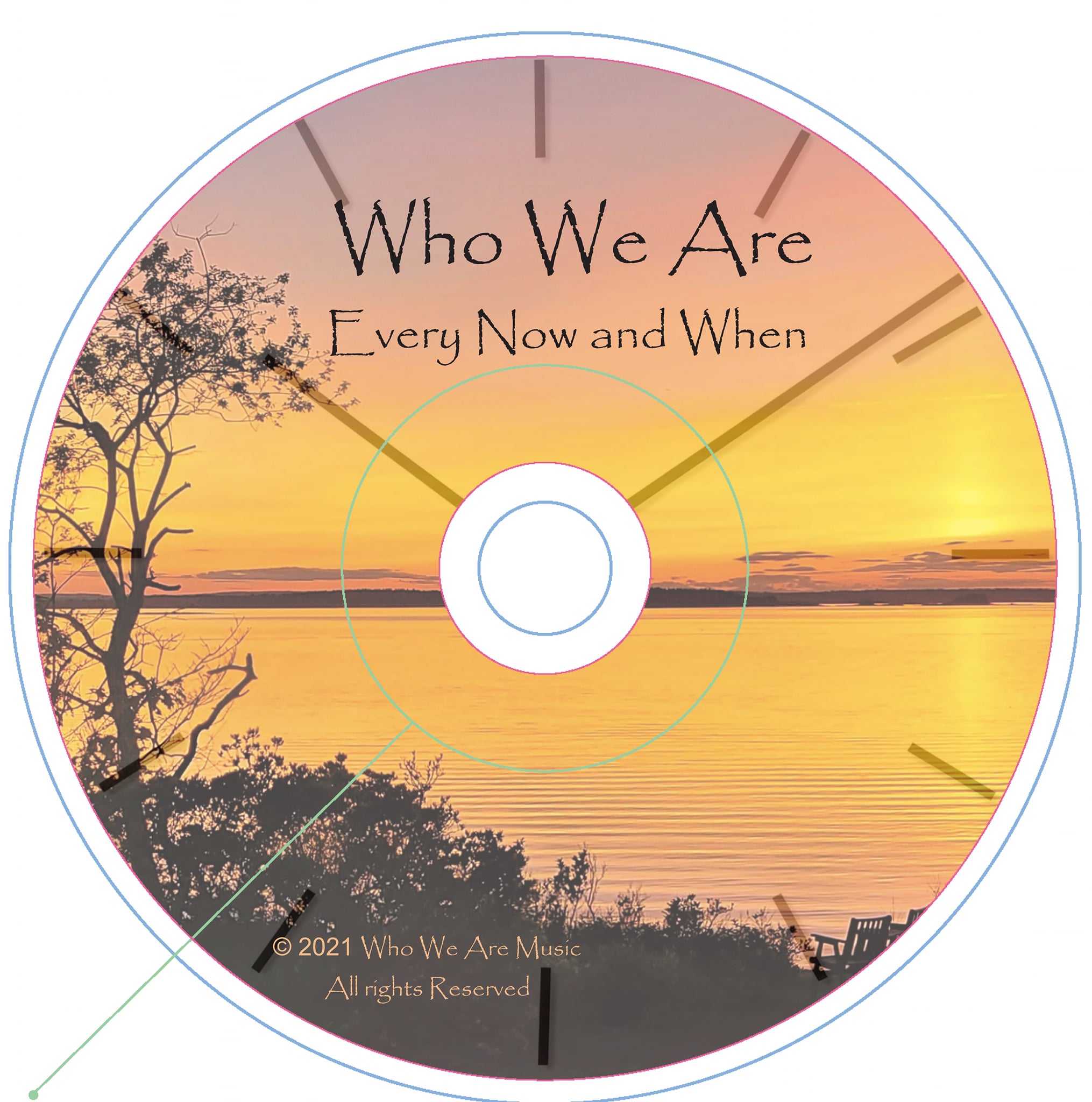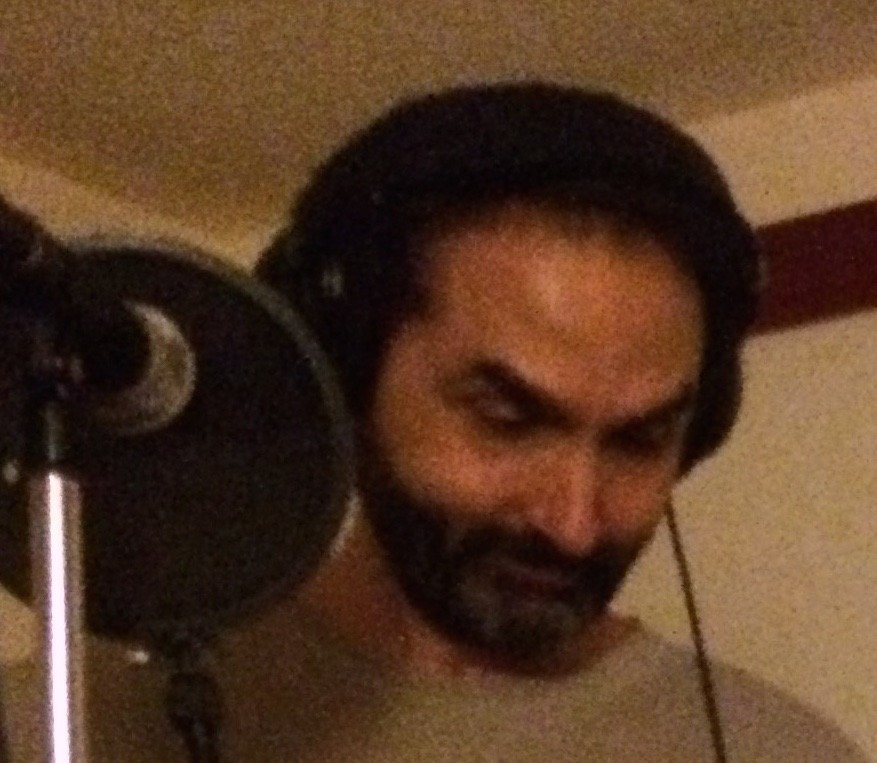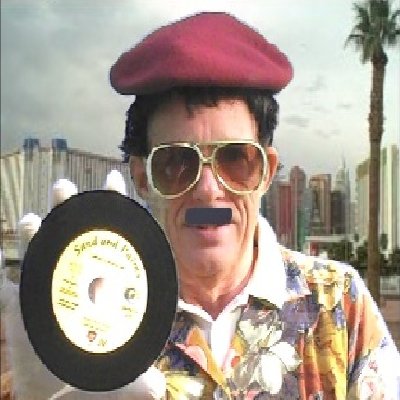Topics

Basic (free) Member
|
| | | |

Logun
|
5/19/2009 5:17:42 PM
Chord Progressions
Ok new question and talking point: Chord Progressions!
Again I would very much like to hear and learn from each and every one of you on this topic. My first academic encounter with this topic was early with band class and again later with Guitar class. Than later when playing in bands and learning covers and thinking I was going to be in the next best thing. Now I have searched and searched for what I thought was missing in my knowledge of the subject, but the more I learn the more it goes back to the basics.
I remember the first progression that really stuck in my mind was the I IV V progression. I know the evil 3 chord progression, but there are so many great songs that have a 3 chord progression. "Wild Thing" is I IV V IV, "The Lions Sleep Tonight" is I IV I V, and there are many great ones that use I I IV V. "La' Bamba, Like a Rolling Stone, and Lucy in the Sky with Diamonds" are all I IV V V.
There are even a lot of great songs with simpler progressions such as repeating I V, or just I I I I. Blues uses a lot of simple progressions like that.
There are more complex cord progressions using the minor and major variations within the scale and even full circle progressions.
My question to everyone is what are your overall thoughts on chord progressions? Are there any progressions you find yourself using more than others? Do you have anything against any of the chord progressions? And please share what you know and what you have learned about the subject.
Thank You.
|

|

Bryon Tosoff
|
5/19/2009 6:06:33 PM
---- Updated 5/19/2009 6:20:58 PM
I use the circle of fifths a lot.Major= relative minors. how the ii-v I progression can take you all over the place...I teach it .as an exercise for my jazz students working them through all the keys as well it is one of the best ways for developing a song progression for jazz and for just about anything in any genre
One of the most common jazz progressions is the ii-V iii-vi ii-V-I
Also modulations obviously are important in crafting a good song coupled with a strong melody especially if it is an instrumental, (obviously)
I am not one for lyrics so I stay away from that as it is an area I just dont have any desire to pursue......probably because I cant write a good lyric, not my strong suit
Also "Fly me to the moon" or the "shadow of your smile" is one of the finest illustrations of how the Circle of 5ths can be applied and all those secondary dominant chords....although I will now have some people throw me out of iacmusic and this blog if I continue doing this type of thing and talking nonsense
I could do a full on breakdown here of the above and how the progressions work and why , or perhaps Beethovens Moonlight Sonata or his Wondrous Pathetique Sonata ( there is a super cool melody woven inside this in the 2nd movement. simple but surrounded by fantastic voicings, now that is genius, there is genius in simplicity you know) which is insanely magnificent and mind blowing or perhaps Rachmanioff's (sp) Prelude in C# minor or Evard Grieg stunningly water laden like Notturno which is a superbly crafted elegant classical song...or maybe .....I better shut up.
Most musicians over the course of time have developed an innate ability of knowing what to do and have a feel for what sounds good...kind a natural thing that occurs over time via the experimenting idea...
This is a huge subject and pretty hard to cover in this blog.
So in essence I really dont know if there are rules of song writing that are right or wrong , just different.....it is amazing to me still how timeless and genius like the beatles songs are, they wrote the best pop/rock melodies of any group that I can think of.....
there
bryon
|

|

Richard Scotti
|
5/19/2009 6:55:30 PM
---- Updated 5/19/2009 7:25:26 PM
I think that songwriters have to be careful about using well known chord progressions unless they are really adding a new dimension that sounds different.
I try not to think in terms of progressions and just focus on the melody and where the song takes me. Then the chords can support the melody in interesting ways. I'm always on the lookout for opportunities to put a different spin on chord combinations so they are not slavishly repeating anything that has been done to death already. Sometimes using a 7th, diminished or suspended chord in an unexpected place will spice things up a bit. The key is to avoid predictability. Surprise the listener!
I always try to be as original as possible. I f I find a song reminds me too much of another known song, I change it. I also try as hard as I can to make each of my songs different from one another. If a song of mine is very popular, I don't try to write another one just like it or "clone" it. Lightning never strikes twice in the same place so I don't even bother trying to replicate past successes. My goal is just keep moving forward. I love experimenting and risking failure. Getting better and getting more versatile are my key ambitions with songwriting. I write many songs which never see the light of day but the sheer volume of my work output insures that a few winners will emerge from the rubble.
|

|
|
5/19/2009 7:53:35 PM
If you avoid using well-known chord progressions and repeating yourself, you will run out of harmonic material very quickly. Don't try so hard to be original that you end up paralyzed creatively. Sometimes things have been done before because they work really well.
In fact, people used to take openly take chord progressions from Tin Pan Alley songs and write new jazz material on top of it. These songs are called contrafacts. For example, "Cotton Tail" is a contrafact on the chorus of Gershwin's "I Got Rhythm." I never connected the two until I read it in a textbook.
So harmonic material is just a component of the pitch material of a song, and to me it's subservient to melody. On top of that, voicing chords across different instruments, doing arpeggiated patterns, adding nonchord tones, etc. can add more unique character to a familiar chord progression if just playing the block chords is sounding too samey.
Sorry; I had to jump in and defend the old standards :) Avoiding them really limited my output for awhile, and you can never really run out of fun things to do over chord progressions.
I'll probably come back and add more stuff later - shower time! :) Have fun guys.
|
|

Bryon Tosoff
|
5/19/2009 8:42:35 PM
Ray said "if you avoid using well-known chord progressions and repeating yourself, you will run out of harmonic material very quickly. Don't try so hard to be original that you end up paralyzed creatively. Sometimes things have been done before because they work really well."
great point. Ray.....this is so absolutely true and I cant emphasize learning the circle of fifths as well..any kind of exercise and idea especially in jazz is critical in getting your chops down
I have a number of exercises I have written out for my students relating to this very thing
It helps them get proficient in many keys and get comfortable playing walking bass lines, chord shots on top intertwined in there will be some kinda a melodic curve pattern and rhythmic sequence as well
In conjunction I get them to do regular block chords or rootless chords and play specific exercise runs on top and or melodies. and challenge them to develop their own ideas.... Using the tri-tone progression (form of circle of fifth system) is probably one of the most fun things they do......
anyways I have to go teach
have fun discussing this excellent topic by Logun. good one there
bryon
|

|

The Man With No Band
|
5/19/2009 9:37:42 PM
I just play ... and when someone says ... "Hey you can't do that" ! ... I say ... "I just did" ... :)
Although I went through music theory and understand it perfectly well ... it's only used in my songs when it appears on it's own ...
|

|
|
5/19/2009 10:36:37 PM
---- Updated 5/19/2009 10:39:20 PM
This is a discussion I have regularly with a friend of mine who is always trying to find a new angle to get me to change my mind. He believes there is a right way and a wrong way to compose chord progressions. I believe you can go from any chord to any chord - and in a conventional Western melodic/harmonic tonal (aka diatonic) framework all you have to do then is justify it in harmonic terms.
The structure and melodic momentum of a song will always tell you where the harmony wants to go. You then have two choices - do what is expected or do something else. Whichever you choose, you then have two choices - do what is expected or do something else...
I like to work within a tight harmonic and structural framework, but whenever I've found myself trying to stick to a I IV V type progression I've found things turned out too bland for my taste. My song The Truth Will Set You Free started off as an exercise in writing a single-chord song and was so boring I added some chords, after which I was quite pleased with it.
A game I often play with my own songwriting is to insert a Bb9 chord into almost every song. The rule is that I have to take things on to a chord it's not been followed by in at least the previous 12 songs, and the fun then is in getting everything back 'home'.
|
|

Bryon Tosoff
|
5/20/2009 2:51:32 AM
---- Updated 5/20/2009 2:03:30 PM
Great response there Woodstock....like what ya said........and the Truth will set you free is a fricking dynomite kikking tune. one of my favs here at iac...very cool ,magical piece of work. well done indeed!
per your thing on melody..
I like taking existing songs and do up chord substitutions to them, I literally throw away existing chords. like the Beatles from me to you tune which essentially has 4 chords (0r so) and throw down crazy flat 10s and 13th 7s underneath the melody
or quartal chords. or 9's like you have or dim augmented demented every perverted crazy chord I can....it is fun
I do that a lot to many a beatle tunes and pop tunes and voice them up jazz them out and up
bryon
|

|

Texas Willie
|
5/20/2009 3:44:36 PM
Great Topic and discussion......I will be following this with great interest. Thanks to all the contributors!
TW
|

|

Mr. Ed
|
5/20/2009 3:46:02 PM
---- Updated 5/20/2009 3:48:33 PM
Cords have no place in music.
Imho, there's no reason for anything to need to be tied up.
I say, do away with them, and let the musicians run free!
|

|

Bryon Tosoff
|
5/20/2009 3:53:25 PM
hahaha Mr Ed good one
cords = chords I had some pronounce chords as in chores with a d on the end
choreds
Play those choreds again
|

|

Logun
|
5/21/2009 1:17:40 AM
Great Replies!!!
I am glad to see others share my interest in the subject and am grateful for the insight you have shared.
Bryon could you explain the Circle of Fifths more? I have read about them and listened to examples, but have never really had it broken down to a point I felt I really understood it.
Also can anybody go over the embellishment mentioned before? Specifically relating to the Chord Progression and staying within key or scale. I have always been amazed with this and Lead Guitarist that just knew what scale to play in or what key to play to (jam session setting where the key isn’t known per se.)
|

|
|
5/21/2009 3:07:07 AM
---- Updated 5/21/2009 4:23:34 AM
So this is to Logun's most recent thinger - there needs to be a little quotation reply function on this board system.
Circle of Fifths = loaded question. There's a short answer and a very, very long answer. I'll type out a version of the long one because a one-sentence definition doesn't give you much you can use. I don't know how much theory background you have, so forgive me if I either shoot too low and explain the obvious or shoot too high and completely lose you :)
Aight, so circle of fifths describes chord roots moving down by fifths (or up by fourths). You can think about it either way; it's the "pitch class" (name of the note) of the root that's the most important part of the concept.
There are several ways to conceptualize it. The easiest and most useful one to me is this, and I write it in the major mode out of habit: I IV iiv(dim) iii vi ii V I, pronounced one-four-seven-three-six-two-five-one as a pneumonic device. I memorized it a long time ago, and it's helpful to this day. Just say it over, and over, and over :)
So the point of learning this is it's the backbone of Western tonal harmony, which is the harmonic language you'll typically deal with when listening to, playing, and writing pop stuff. I use "pop" to mean non-classical.
In tonal music, harmonic direction is typically "goal-oriented" in the sense that it's progressing (heh chord progression) towards the tonic chord, or I chord. Conventionally the strongest way to get there is by circle-of-fifths chord-root movements. I don't remember how this convention came to be right now, but it doesn't really matter; whether you realize it or not, the strength of the progression is probably programmed in your brain already based on how pervasive it is in Western music.
So this gets to how it might be of use to you. Let's say you're trolling along in C major and you're stuck on the iii chord, which would be E minor. Technically, the strongest place to go from there would be the vi chord, or A minor. Each chord in the progression points to the next, so you could say the goal of the iii chord is to move to the vi chord, the ii chord points to the V chord, etc.
Of course, if all you ever did was follow the circle of fifths, you'd have one chord progression, which gets dull really fast :) So you can use this concept in little bits and pieces, maybe a string of two or three chords with root movement by fifth, then move the root up or down by second, then do some more circle of fifths stuff, etc... Or you can just not use it at all, and do what sounds good :) You'll probably end up using it some by accident anyway. It's hard to avoid going from I to IV at some point.
Bryon mentions it a lot in the context of jazz, and he'll have to fill you in on that application; the only jazz I've ever played is behind the drumkit, and we don't have to worry about chords back there :) But if there's anything else you want me to explain on that, keep the questions coming.
|
|
_REDDISH__11-27-11_001.jpg)
Steve April
|
5/21/2009 3:56:09 AM
---- Updated 5/21/2009 5:42:51 AM
Mr. Ed got horse sense, 'when you get down to the source...'
Very cool discussion. I relate especially to the comment above about "changing up" chords, and walking back to "home."
Like, a song being a journey. I like to go somewhere very surprising, especially the break...
Keeps the fresh vibe...hopefully.
On the other hand, there's much to say for the classic structure, may be a little like 'the fibonacci ratio' in physics. A ratio that pops up in many diverse phenomena, that seems associated with growth i.e. seashells, flower petals, pine cones, music, architecture...
|

|

Kevin White
|
5/21/2009 4:29:42 AM
L ... circle of fifths ... Start w/ A ... go up five, then five from there, and on and on ... and you arrive back at ... guess.
Chord progressions are subservient to melody. Make the melody, fit the chords.
|

|

F Word Scissorhands
|
5/21/2009 6:08:25 AM
Like skinning a cat, there is more than one way to fit chords to a melody. I prefer the
least messy way....
|

|

never never band
|
5/21/2009 6:54:33 AM
Wikipedia has a great resource for chord progressions.
start here on this Coltrane page which has a great summery of the cycle of 5ths and 3rds. This is a bit advanced, but look at the bottom of the page for the links to various chord progressions.
The Andelusian Cadence ans the Stomp Progression will ring a bell right when you try them and sort of get your ears going...all the progressions have a little player so you can hear the chord voicings. I really like teaching the Andelusian Cadence because of how the major and minor keys work in it, I think it just gets your ears going to play them.
I send my students to this resource because it's really clearly written and easy to use. I spend a fair amount of time there myself actually.
P.
|

|
|
5/22/2009 5:07:29 PM
You don't necessarily have to write the melody first and fit the chords later.
I've got a really fun and productive writing relationship right now where James Pandelis scores out an entire piece of harmonic support electronically and sends it to me, and I write lyrics and melody on top of it.
Up until two months ago, I would have dismissed this approach to writing, thinking that lyrics and melody were more important and thus should be written first. But the first song that resulted from this seemingly backwards approach to writing was pretty awesome - way better than anything I've done in a long time. We don't have a good recording of it yet to post, but it should be up in about a week.
A lot of bands work this way. I can't speak for what goes on in their heads, but sometimes I hear a chord progression or bass line and stuff just starts coming to me - fragments of melody and lyrics. If the melody comes first, I just spit out gibberish syllables to record the melodic idea - scratch lyrics. Later I go back and revise them to make it a song.
So there are a lot of different approaches to songwriting, and I'm not sure that there is one particular way that is the best. Plus not every approach will work for everybody. But trying a different approach can lead you to ideas you might not have thought of otherwise.
|
|
.jpg)
Product Recall
|
5/22/2009 9:29:47 PM
personally i'm a self taught guitarist, from magazines and the odd reference books, i have never studied music or music theory (probably explains why i have the technique of a three legged giraffe). through time and covers i have found certain chord progressions work better than others, but when i write i play the next chord out of the feel of the song i'm playing. i try not to let theory get in the way. I just let that shit fly and see what i got at the end of it.
|

|

Tom O'Brien
|
5/22/2009 10:54:05 PM
Yeah, I like the attitude of not relying on theory, circle of fifths and so on. There are proven chord progressions which, when stuck, you can always rely on because we know they work.
But I like flying by the seat of my pants writing. There's usually a logical chord choice that follows in a certain progression. You can be safe and go with that or you can say, "What is the less obvious choice?" Sometimes surprise can be a great element, when chords wander where you don't expect them too. You can't just wander though the whole song though - you'll lose the listener. But fresh chord choices make for more interesting melodies.
If you play G - C - D, then your ear expects G again. What if you played an E flat minor? It might sound funny to your ear at first, but it might evoke an emotion that's just right for your lyric.
All progressions are emotional in nature. Some emotions are simple e.g. happiness. Some emotions are more complex, like the feeling when you think you've forgotten to do something and it's going to make things difficult for another person - that's going to take something other that G - C - D - G.
The chords themselves are emotional. A major chord is generally positive, and a minor chord is generally negative. But that's not very specific. Minor 7 adds complexity to the negativity. Instead of just "sad" it may be "wistful." Diminished 7's are very emotionally complex and can add confusion which can be really positively resolved with a major chord, or deflated with a minor chord.
I don't think there are any right or wrong chord progressions. But there are thoughtless and overused ones which don't add much to the song's meaning. Still, ther are tons of beautiful 3 chord songs.
It's like painting. The more colors you use, the more emotionally complex the painting is going to be. Many of the old masters used only a few colors - look at Rembrandt portraits. Mostly burnt umber, burnt sienna, lead white, yellow ochre. red ochre - You're not going to find any cobalt turquoise or carbazole violet. And when you look at a Rembrandt, you feel a very specific emotion. When you look at a Jackson Pollock or a Mondrian, you feel a more complex emotion. Look at an ArshilleGorky expressionist painting and you can see what happens when you allow for too many chords - the emotion is that of your head exploding!
Another analogy can be found in writing. "The dog chased the cat" is your I,IV,V song. But "Anxiously, the mangy, three legged dog lumbered after the fleet, young, calico kitten" calls for different chord choices.
It's all about emotion over thought.
|

|

The CODE
|
5/22/2009 11:00:43 PM
I...for one...never did the dots!
|

|

never never band
|
5/22/2009 11:14:12 PM
well, of course you want to be able to do your "own thing".
But I think the more tools you have in your tool box the more you can do.
Breaking rules is Great, but knowing a bit about what the rules first is also great.
I'm self taught, played by ear for over 20 years, but I have a very good ear.
So I was able to pick up on things I was hearing pretty easily, which really means I was studying theory all along but lacked te language to describe what I was doing.
I developed a method of teaching guitar that we use in the TYMS music school now for 50 or more students that is all based on what I learned playing by ear, but now that I have some language for it I can communicate with other players.
Really, getting over my aversion to theory is the best thing thats ever happened to my playing, I still play outside a lot both tonally and rhythmically, but now I can get weird, really weird, and understand whats going on and WHY it's weird.
|

|

Bryon Tosoff
|
5/22/2009 11:15:36 PM
So in closing. We just do it.
|

|

Jimmie Vestal
|
5/25/2009 3:18:58 PM
Chords that have influenced some of the songs I've recorded were those that have REMAINED IN THE SAME CHORD throughout, or mostly throughout, the entire song!
Junior Walker & The All Stars (1965) - "Shotgun"
Don Gardner & Dee Dee Ford (1962) - "I Need Your Loving"
Perhaps you can think of plenty of current titles as exampes. Please post them here.
One of my one-chord songs, "Who Dat"?, made it into a movie soundtrack of a Klucking Films project.
|

|

Logun
|
5/26/2009 4:29:58 PM
Again great replies!
I have been messing around with a lot of the things mentioned on here including the Circle of Fifths.
I was also intrigued by Steve April's mention of The Golden Ratio.
Fueled by all of this I went searching for Music representation of the Fibonacci Numbers and found some cool stuff.
It amazed me how different music elements fit right into the sequence.
If you look at the Circle of Fifths and Fibonacci Numbers and think in reference to the Harmonic and Melodic Intervals you can come up with some very nice sounds and progressions.
However; it seems I am not the first to think of this.
The band Tool used this very theory to make their song Lateralus.
Here is a link to the video of the song and the breakdown of it's relationship to the Fibonacci Numbers.
I also put a link to Wiki's Fibonacci Numbers Page.
http://digg.com/lbv.php?id=5000859&ord=1
http://en.wikipedia.org/wiki/Fibonacci_number
I might have hidden an example of the Sequence in this Reply...
Can you see it?
Thanks Everyone!
|

|
| |
�2015-16 IndieMusicPeople.com All Rights
Reserved
| |
|